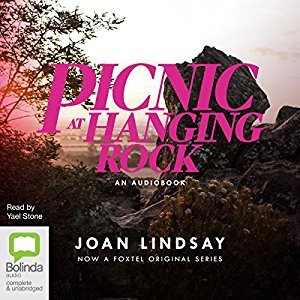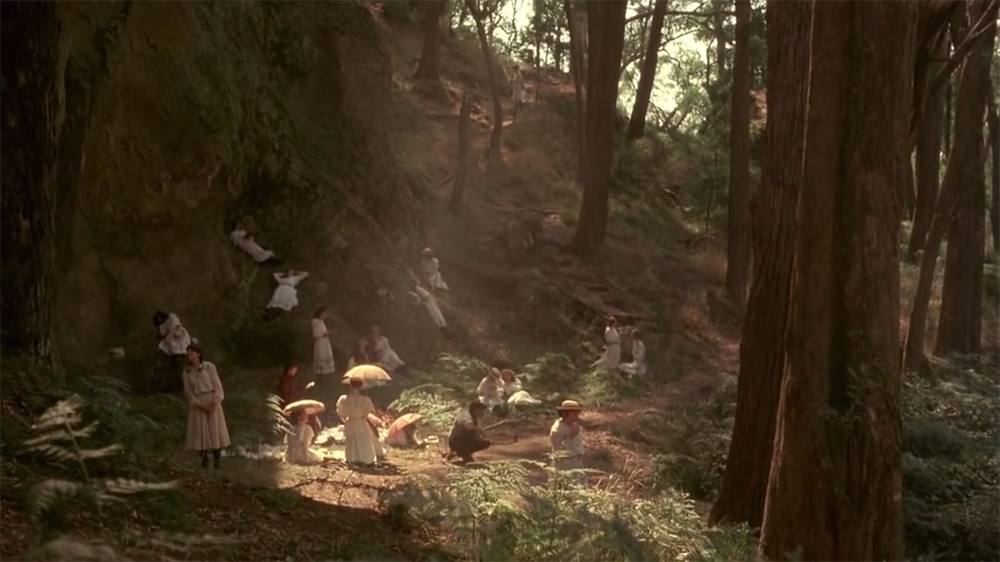 Picnic at Hanging Rock by Joan Lindsay
Picnic at Hanging Rock by Joan Lindsay Narrator: Yael Stone
Published by Bolinda Publishing Pty Ltd on May 4, 2018 (first published 1967)
Source: Purchased
Genres: Classic, Historical Fiction
Length: 8 hrs 41 mins
Format: Audiobook
Purchase at Bookshop.org or Purchase at Amazon
Add on Goodreads

It was a cloudless summer day in the year nineteen hundred.
Everyone at Appleyard College for Young Ladies agreed it was just right for a picnic at Hanging Rock. After lunch, a group of three of the girls climbed into the blaze of the afternoon sun, pressing on through the scrub into the shadows of Hanging Rock. Further, higher, till at last they disappeared.
They never returned.
Some authors manage to pack more atmosphere and tension and characters into less than 200 pages than others ever manage to, even in books twice as long. Lindsay has done just that in Picnic at Hanging Rock.
Girls at a boarding school go out for a picnic, as the title states, at Hanging Rock. Hanging Rock is a former volcano in central Victoria, Australia. The setting plays a huge part in the story, casts its shadow over the whole book.

After lunch, four of the girls go climbing in the rocks, followed eventually by one of the teachers. One of the girls runs back to the picnic area in terror, but with no memory of what happened. The rest of the girls and the teacher are never seen again.
The rest of the story tells us what happens after. The ripples from the disappearances fan out, bringing terrible endings for some people and happily ever afters for others. There are a lot of characters, the girls and the teachers, the servants in the house, the parents, others who live/vacation in the area, and the police, but each falls into his or her place well and we know them, or at least their type, well. We know what gossip can do, we know what powers authority can have, we know what some people can be lead to do out of desperation. We know that teenage girls can be both terrible and loving. We know that sometimes “real life” doesn’t work out like fairytales. Sometimes, the prince saves the wrong girl, the girl who isn’t his true love. We know some mysteries don’t have solutions, and that’s part of the beauty of this one, the lack of an explanation.

The writing is marvelous, descriptive and beautiful. The contrasts between nature and the artificial lives of the girls is clearly shown. Even in the every day, the feeling that something horrible is just below the surface persists.
The ending is left ambiguous. We don’t know what happened at Hanging Rock. There is a final chapter floating around out there that Lindsay’s editor cut from the original. I read a summary of it and I think I’m going to pretend I didn’t. I don’t need to know what happened. Hints and feelings are enough for me. Definitely a good read.
Picnic at Hanging Rock is not a book I would have found myself. Part of the Back to the Classics Challenge this year is to read a classic From Africa, Asia, or Oceania (including Australia). A couple of people had already reviewed Picnic at Hanging Rock and we all know I love a good mystery.
It’s also an Amazon Prime mini-series. I wonder if I can get my husband to watch it with me. Here’s the trailer:
This counts as 2 pts in the COYER Treasure Hunt (book with more than 125 pages and less than 215 pages in physical format).

I have this in print somewhere. It sounds like it’s worth reading.
Definitely worth reading, and relatively short (not that that ever affects what I read 🙂 ).
I read this a year or two ago and it left quite an impression on me. The ending was a bit much, but the subtlety of the rest of the book was pretty powerful. Like you say, she really plays with your perceptions and personal experiences of human nature!
I think it’s one I’ll probably remember for a while.
Oh, I want to read this! I saw the 1975 film by Peter Weir which was mysteriously creepy.
The images I found from that movie looked like they fit the feel of the book well.
I just finished this book and agree that Lindsay was able to convey such a sense of place and mystery into this short novel.
I think this will be one of those books that sticks with me for a while.